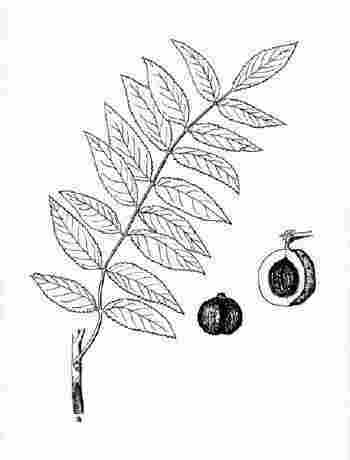- This forum has 1 topic, and was last updated 5 years ago by .
Viewing topic 1 (of 1 total)
-
- Topic
- Voices
- Last Post
Viewing topic 1 (of 1 total)
- You must be logged in to create new topics.
An online horse care and health guide
Welcome Guest! Do you need a reliable equine reference you could use at home, at the barn, even on the trail? Still have questions? How about access to a experienced equine veterinarian? You are 60 seconds away from access!
Come Join Us we have several options and the first month is FREE!
By the way, when you join not only is the whole site yours to enjoy but these ads disappear!
 Black walnuts are large, 60-80 foot, forest trees native to much of North America. The dark bark has characteristic broad, round ridges. The leaves are alternate, pinnately compound, 1 to 2 feet long, with 13 to 23 sharply toothed, tapered-pointed leaflets. Often there is no terminal leaflet. The fruit is a very rough nut enclosed within a clammy glandular husk, 2 to 4 inches in diameter.
Black walnuts are large, 60-80 foot, forest trees native to much of North America. The dark bark has characteristic broad, round ridges. The leaves are alternate, pinnately compound, 1 to 2 feet long, with 13 to 23 sharply toothed, tapered-pointed leaflets. Often there is no terminal leaflet. The fruit is a very rough nut enclosed within a clammy glandular husk, 2 to 4 inches in diameter.